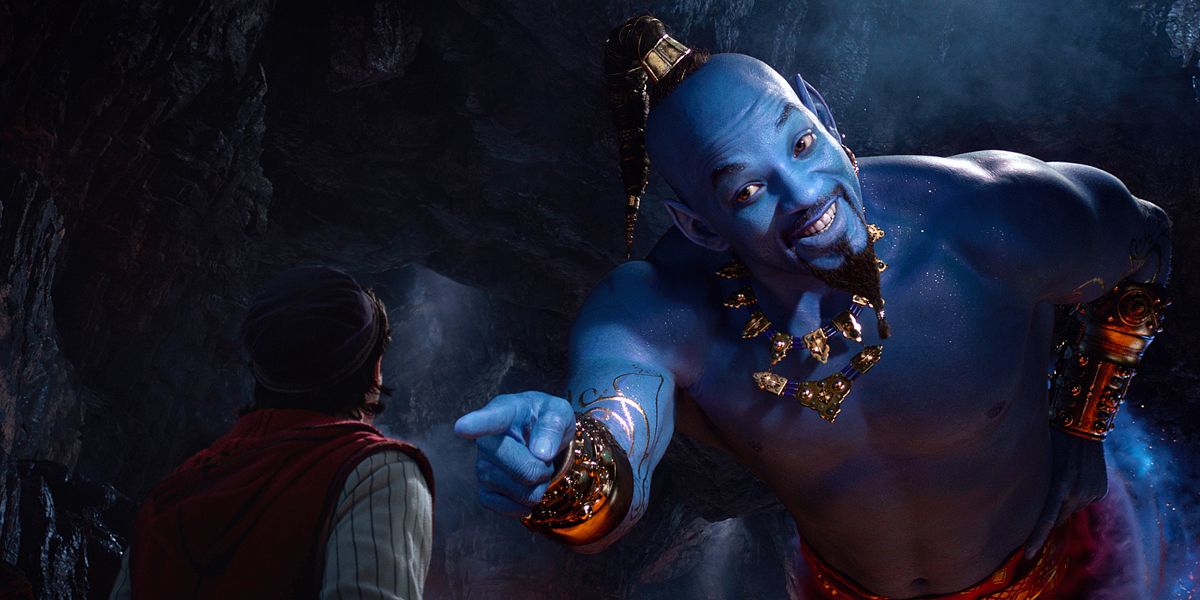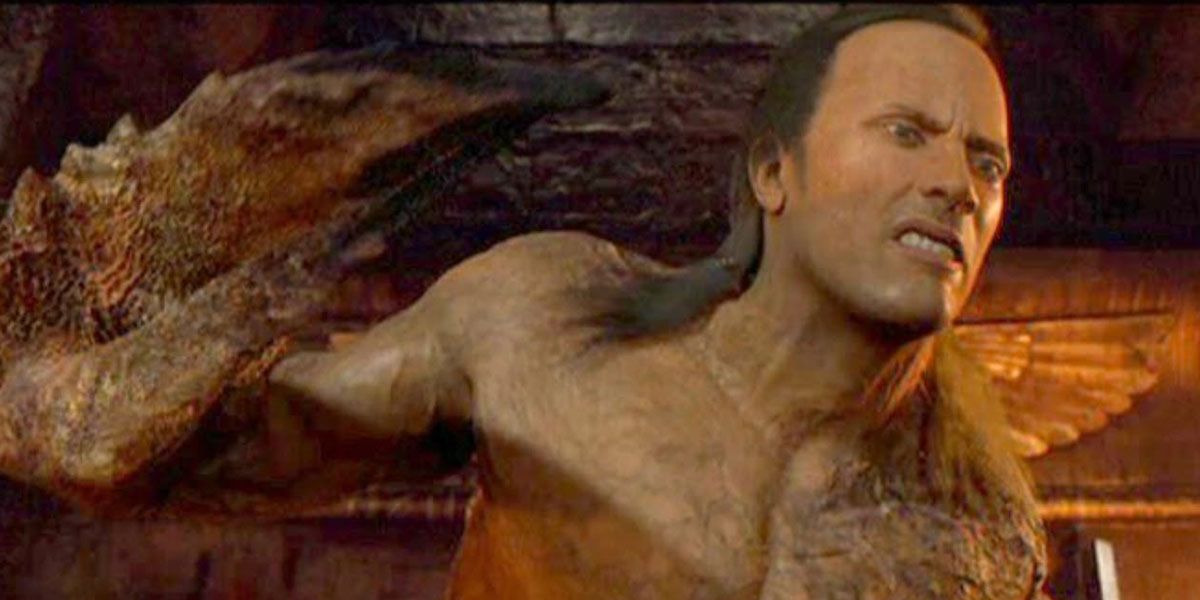From Will Smith's Genie in Aladdin to the live-action Sonic the Hedgehog movie to Detective Pikachu, Hollywood is embracing photorealistic animated characters like never before. Audiences, however, are having a tougher time accepting them. In 1993, Jurassic Park's use of convincing computer-generated dinosaurs was revolutionary. Today, hyper-real recreations of classic cartoon characters like Genie and Sonic have us asking a similar question to Dr. Ian Malcolm: Just because you could, does it mean you should?
It's important to clarify that photorealistic CGI as a medium is not the problem. As films like Jurassic Park prove, this form of animation and imaging can be breathtaking, particularly when married with the relatively new -- and now widespread -- art of motion capture. The combination of motion capture and CGI is really a modern-day update to traditional rotoscoping, where animators trace over footage of an actor to give an animated character realistically fluid movement. Andy Serkis, the technique's leading performer, put in a groundbreaking performance as Gollum in The Lord of the Rings adaptations (and later, for The Hobbit film trilogy) in the late '90s/early '00s that still holds up to this day, an impressive feat for a medium that ages so quickly.
RELATED: Aladdin: This Genie/Sonic the Hedgehog Mashup Is Pure Nightmare Fuel
Yet, for all that's technically admirable about them, seeing famous 2D cartoon characters reconstituted into this format doesn't take our breath away the way that Spielberg's herds of towering Brontosaurus did in 1993, or send shivers down our spines the way that Serkis' crawling Gollum did in 2001. Instead, it can make us feel pretty uncomfortable -- a reaction that should have perhaps been obvious to those in charge of commissioning the projects.
Obvious, but perhaps unavoidable given the inevitability of this trend. Since films like Tron and Toy Story pushed the boundaries of what could be achieved with the technology when it was in its infancy, digital effects and CGI in film, television and video games have been growing more and more sophisticated by the year. And they work their magic best when they're completely invisible to us. You only need to watch the Behind The Scenes footage of any blockbuster made in the last 10 or 15 years to see how often actors perform against a landscape of green or blue that'll later be replaced by the burning rubble of a destroyed city or the fantastical forest of a distant planet.
"Good" or "bad" CGI has also become a major sticking point for critic and audience reviews. Even the least discerning cinema-goer can distinguish between the well-constructed face of Avengers: Infinity War's Thanos and the plastic puppetry of Justice League's Steppenwolf. (Or, to a larger extreme, the digital wizardry used in The Matrix and the digital dud of the Scorpion King in The Mummy Returns, a film that came out a whole two years later.)
RELATED: Brutal Justice League Honest Trailer Drags Lots & Lots of CGI
Like all magic tricks, our relationship with CGI depends entirely on whether or not the illusion works. While many a think piece has been written on the problem of relying on CGI villains, as well as the suspect weightlessness that heavily digitized battle scenes sometimes have (see: the Battle of Helm's Deep in The Two Towers vs. the Battle of Five Armies in the third Hobbit installment) it'll probably come as a surprise to learn that 96% of Infinity War was CGI. A similar percentage is likely true of Justice League, but thanks in part to things like Henry Cavill's mustache-gate, the DC film received far more criticism for its fakery because viewers saw it as exactly that: fake.
Bringing characters like Thanos and Gollum to life also doesn't carry the baggage of already having an animated template to be compared with. These characters existed predominantly in flat, illustrative form before three-dimensional life was breathed into them. The same can't be said about characters like Pikachu, who has starred in a long-running anime series and over twenty feature-length animated films. Seeing the yellow mouse as an actual yellow mouse -- fur and and all -- triggers our sense of the uncanny valley, a phenomenon normally directed towards human characters. Detective Pikachu, which relies on the gimmick of seeing real people and "real" Pokemon together, is kind of this generation's Who Framed Roger Rabbit, except this time around, the gimmick is inverted as the gap between 'toon and reality blurs.
Wondering what the most outlandish cartoon creations would look like if they existed in our world is a fun "what if..?" Fan artists have been toying with this idea for years, and in fact, one of them managed to get a job on Detective Pikachu. Unfortunately, when this experiment is expanded into cinematic event, animators are left in a no-win situation: either alter an iconic design to have it make sense IRL (as is the case with the redesign of Sonic's eyes) or leave it as it is and risk creating a Lovecraftian eldritch abomination (as is the case with Mr. Mime) forcing us to question everything we ever liked about the character in the first place.
Applying real-world logic to cartoons puts the latter under scrutiny they were never intended to be examined with. The much-memed reveal of Will Smith in full Genie mode was always going to look iffy because, good or bad CGI, we were always going to look it at and just see the Fresh Prince of Bel-Air painted blue. It's an aspect of the film we have to look past in order to enjoy the product as a whole, rather than get excited to see more of. (Did the live-action Genie have to be blue? According to the uproar that ensued when fans thought he wouldn't be, the answer is an emphatic yes.)
RELATED: Aladdin: The Most Devastating Fan Reactions to Will Smith's Blue Genie
Spider-Man: Into the Spider-Verse's Best Animated Feature Oscar win proves, of course, that the photorealistic invasion doesn't signal the end of other forms of animation. As is always the case with art, the prominence of one style is counterbalanced by the complete opposite. For the last decade, cartoon series' like Adventure Time and Teen Titans GO! have been nostalgically leaning heavily into the flatter, sillier and rubbery cartoon physics of classic Looney Tunes skits, while Disney, Pixar, DreamWorks, etc. might have fully abandoned the second dimension, but not the highly-stylized look and feel of their cel-shaded pasts. Variety is flourishing in the animation industry.
What we need to be mindful of, however, is that the photorealistic CGI trend doesn't end up suffocating this diversity by echoing the hierarchical way that different acting styles are viewed, where a performance that approximates realism the best is always more awards-worthy than the one that is (deliberately) the farthest from it.


